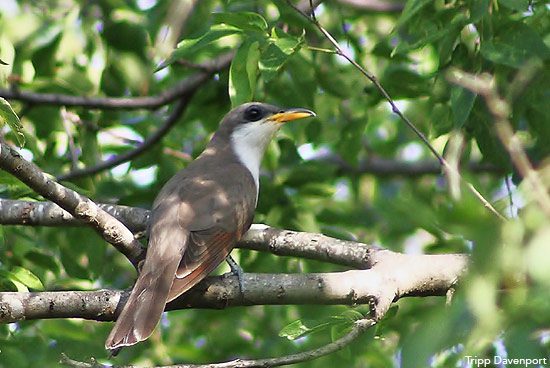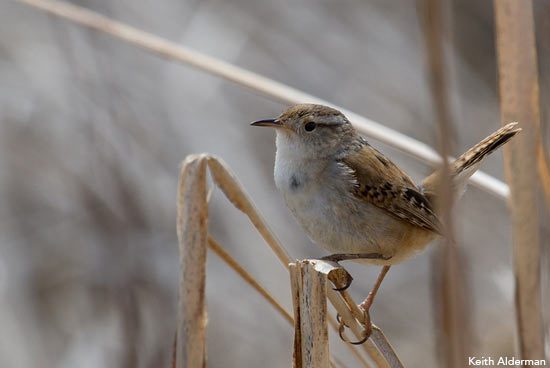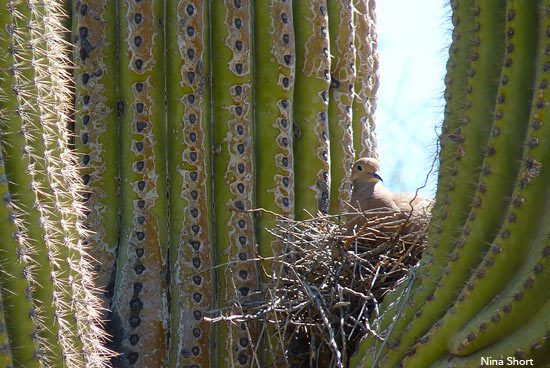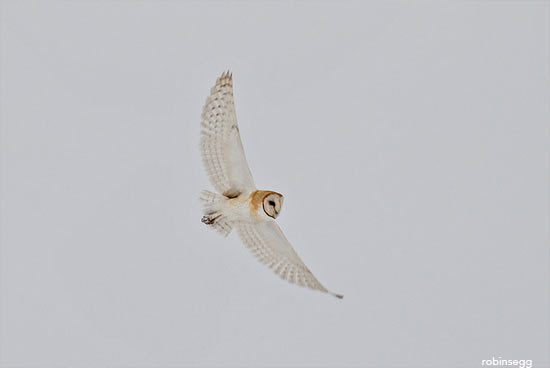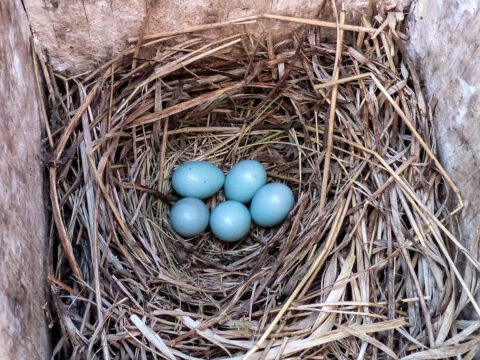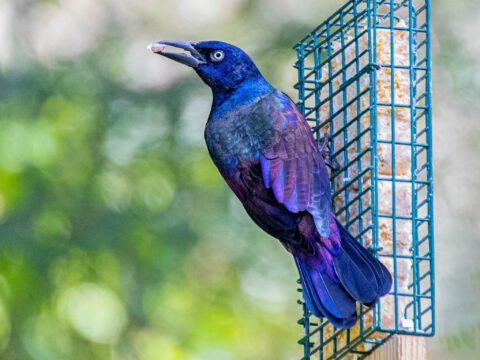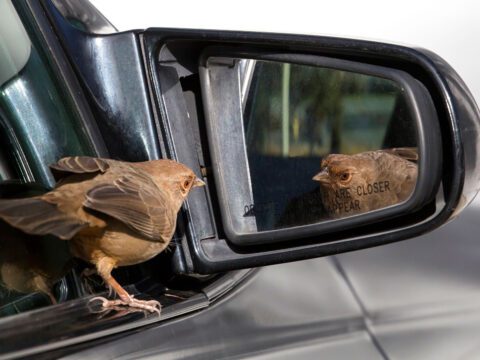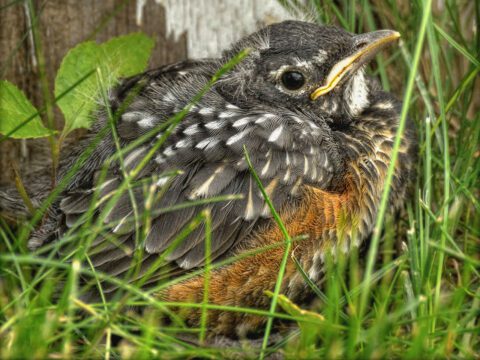NestWatch Looks at the (Citizen) Science in a Few Proverbs
By Jason Martin, NestWatch project leader April 15, 2011
Yellow-billed Cuckoos sometimes let other birds do the incubating for them. Photo by Tripp Davenport via Birdshare. 
Male Marsh Wrens sing up to 200 songs and build 12 nests to attract their mates. Photo by Keith Alderman via Birdshare. 
Mourning Dove nests are often just a loose collection of twigs. Photo by Nina Short via Birdshare. 
In Barn Owl nests, chicks hatch days apart and can get contentious. Photo by robinsegg via Birdshare.
When it comes to birds and their nests, there are a lot of sayings. Some are true; some less so. For example, “a chattering bird builds no nest” may apply to humans, but it grossly underestimates the male Marsh Wren, which is extremely skilled at both chattering and nest building. Males begin to belt out their tremendous repertoire of up to 200 songs in mid-April to mark their territorial boundaries and to attract females. And they still find time to build up to a dozen nests for females to choose from. Each nest is about the size and shape of a hollow coconut, and is built with grasses, stems, and leaves woven among living plant stems. A successfully wooed female enters the nest through a small hole in the side and lays 5–6 eggs, which hatch after about 2 weeks.
Apparently, Yellow-billed Cuckoos agree with the saying “Don’t put all your eggs in one basket.” This species is an opportunistic brood parasite—a wordy description for a cunning behavior. Usually these cuckoos build their own nests in woodlands in late May, but they occasionally lay eggs in the nests of other birds, as European Cuckoos are famous for doing. They lay 1–5 fast-developing eggs that hatch in a little over one week. It takes only one additional week for young birds to fledge. The feathers of baby cuckoos burst out of their sheaths when they are 6–7 days old, enabling the nestlings to become fully feathered over a period of just two hours! Yellow-billed Cuckoo eggs have been discovered in nests of 11 other species of birds, including Black-billed Cuckoo, American Robin, Gray Catbird, and Wood Thrush. This behavior may increase the likelihood of successful reproduction by spreading the risk of nest predation or other causes of failure among multiple nests.
Often it’s true that “in a broken nest there are few whole eggs,” but this isn’t really accurate in the case of the Mourning Dove. Their nests aren’t exactly broken, but it’s a bit of a stretch to refer to them as whole. The birds build very flimsy assemblages of pine needles, twigs, and grass in the dense foliage of trees and shrubs (and sometimes cacti). They don’t line their nests, so they provide very little insulation for young doves, but this shoddy construction style seems to serve this species quite well. Depending on climate, Mourning Doves can raise up to six broods per year. Females lay two eggs per clutch, which they incubate for two weeks. They brood their nestlings for an additional two weeks before the little ones fledge.
Sometimes “birds in their little nest agree,” but this certainly is not true in some Barn Owl nests. Barn Owls lay each of their 4–6 eggs a few days apart, but they begin incubating as soon as the first egg is laid. This means that the eggs hatch in the same order they were produced (in many other birds, incubation doesn’t start until the last or second-to-last egg is laid, and all the eggs hatch on the same day). Consequently, in a nest with six young Barn Owls, the oldest sibling can be almost two weeks older and much larger than his youngest brother or sister. If food is plentiful, then all of the nestlings get something to eat when the adult owls bring food back to the nest. However, if food is scarce, the older, larger siblings outcompete the younger, smaller owls. Sometimes they even eat the runts of the brood. While this reproductive strategy certainly makes it undesirable to be the youngest in the family, it does maximize the likelihood that Barn Owl nests will produce at least one or two young owls even when times are tough.
Some say “you shouldn’t count your chickens before they hatch,” but I actually encourage this practice. Every year, thousands of citizen-scientist volunteers across the country monitor the nesting activities of birds as part of NestWatch. By collecting data on the number of eggs and young produced by birds, NestWatch volunteers are helping to compile a massive database that we use to track changes in the reproductive biology of birds that may result from climate change or habitat alterations.
You can find lots more information at NestWatch, including an overview of the nesting cycle, how to safely find and monitor nests, how to build a nest box and of course how to join. If you are interested in learning more about the nesting biology of specific species, visit NestWatch’s Focal Species section or our All About Birds species guide. A chain is only as strong as its weakest link—and we’re hoping to put together a chain of citizen scientists the covers the continent!

All About Birds
is a free resource
Available for everyone,
funded by donors like you
American Kestrel by Blair Dudeck / Macaulay Library
